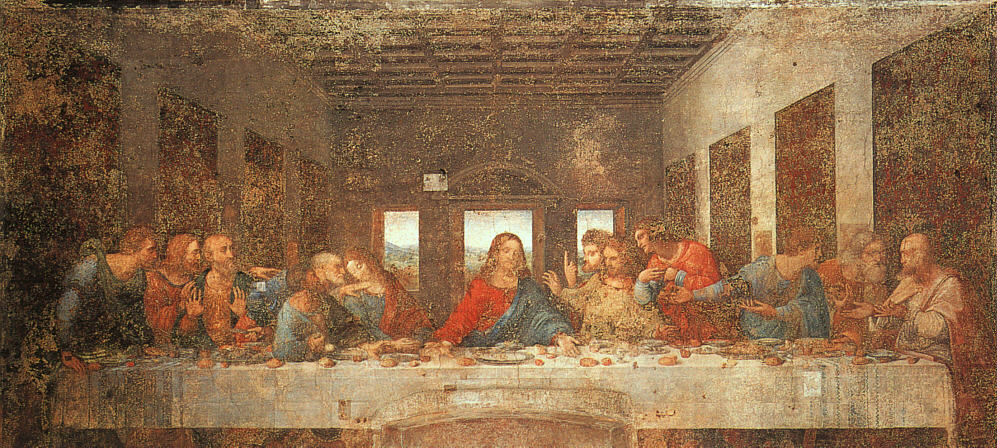|
|
|
|
|
|
|

|
Da Vinci's Last Supper has become one of the most widely appreciated masterpieces in the world. It began to acquire its unique reputation immediately after it was finished in 1498 and its prestige has never diminished. Despite the many changes in tastes, artistic styles, and rapid physical deterioration of the painting itself, the painting's status as an extraordinary creation has never been questioned nor doubted. The perfection of this work lies not only in the artistic merits of the painting, but also in Leonardo's expressive mastery. Leonardo's Last Supper is an ideal pictorial representation of the most important event in the Christian doctrine of salvation - the institution of the Eucharist. His representation of this part of the Christian story has achieved a unanimous accceptance and authority. No other painting of a Christian subject dominates our imagination with the same power of Da Vinci's Last Supper. There are countless copies and reproductions of this particular painting in homes, places of worship, and museums throughout the world. However, when thoughts turn to the Last Supper, we seem to see only Leonardo's representation before us. The painting has also been subject to much attention due to the number of restorations it has had to face since its completion in the fifteenth century. The most recent restoration lasted twenty years and has been the subject of much controversy. The painting that remains so influential has been frequently referred to as "repainted", not "restored". However, restoration has been an ongoing reality with this masterpiece due to unprecedented manner in which Leonardo painted it. Although restoration may have altered Leonardo's painting to a degree, it has prolonged the life of this painting for future generations to appreciate and view. |